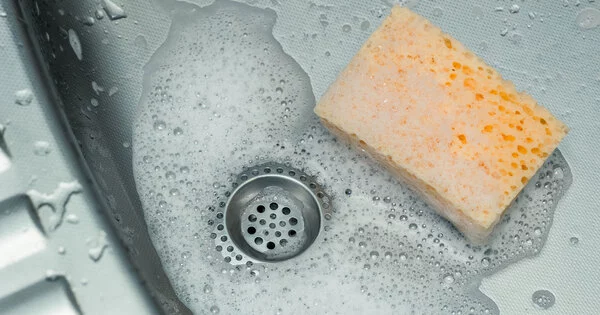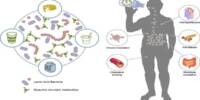Kitchen sponges contain more bacteria than any other surface in your home. We use sponges every day to clean our dishes and surfaces, but they actually spread bacteria. To make matters worse, most conventional sponges are made of plastic and cannot be recycled or composted. As a result, bacteria-infested plastic blocks end up in landfills and oceans. We’ll go over kitchen sponges in detail and recommend some alternatives.
Sponges are microbe paradises, with 54 billion bacteria per cubic centimeter. Researchers report in Nature Chemical Biology on February 10 that sponges, in addition to being damp, airy, and loaded with food scraps, provide an optimal physical environment for bacteria.
Bacteria, like humans, prefer different levels of interaction with their peers. Some bacteria prefer social interactions, while others prefer solitude. Lingchong You, a synthetic biologist at Duke University, and colleagues were curious about the effects of separating different types of microbes on their community interactions. They discovered that intermediate levels of separation, similar to those found in sponges, maximize community diversity.
Sponges are not really well-suited for kitchen hygiene. There’s hardly any sterile surface at home, but the kitchen sponge is probably the most densely populated item at home.
Markus Egert
The researchers distributed different strains of E. coli onto plates with anywhere from six to 1,536 wells, which functioned as isolated compartments. The team examined the number and types of bacterial strains on each plate after 30 hours.
Each compartment is like a party to which the bacteria were randomly assigned, You says. With only six compartments, each party probably has a similar mix of characters, and only the social bacteria survive. With 1,536 compartments, each microbe is probably alone, and the social bacteria die. But an intermediate number of compartments maximizes the odds that a microbe attends the party it prefers. An antisocial microbe might die at a party that’s dominated by socializers, but another antisocial microbe might wind up at a chill gathering and survive. Biodiversity is preserved.
“In retrospect, it’s very, very intuitive,” You says. “What we have identified is a principle that’s universally applicable for any microbial communities.”

Kitchen sponges with a variety of large and small holes not only provide an ideal number of compartments for bacteria, but also a variety of varying-sized parties that can meet the needs of more microbes. The researchers discovered that the resulting bacterial community was more diverse than those produced in liquid cultures, a common method of growing bacteria in a laboratory.
Fortunately, the bacteria in your sponge are mostly harmless. However, if dangerous bacteria, such as Salmonella from raw chicken, do appear, the sponge’s optimal structure will most likely help them survive.
“Sponges are not really well-suited for kitchen hygiene,” says Markus Egert, a microbiologist at Furtwangen University in Villingen-Schwenningen, Germany, who was not involved in the study. “There’s hardly any sterile surface at home, but the kitchen sponge is probably the most densely populated item at home.”
The best way to clean sponges is in the dishwasher or microwave. Before you do so, read the label and avoid using metallic sponges or certain synthetic sponges in the microwave because they will catch fire. If you do decide to microwave your sponge, make sure it is damp because a dry sponge is also highly flammable. If you choose to put your sponge in the dishwasher, use a high-heat setting to ensure that the bacteria in your sponge are killed. Unfortunately, even after daily cleaning, sponges still harbor significant amounts of bacteria. What is the best option? Remove the traditional kitchen sponge.
















